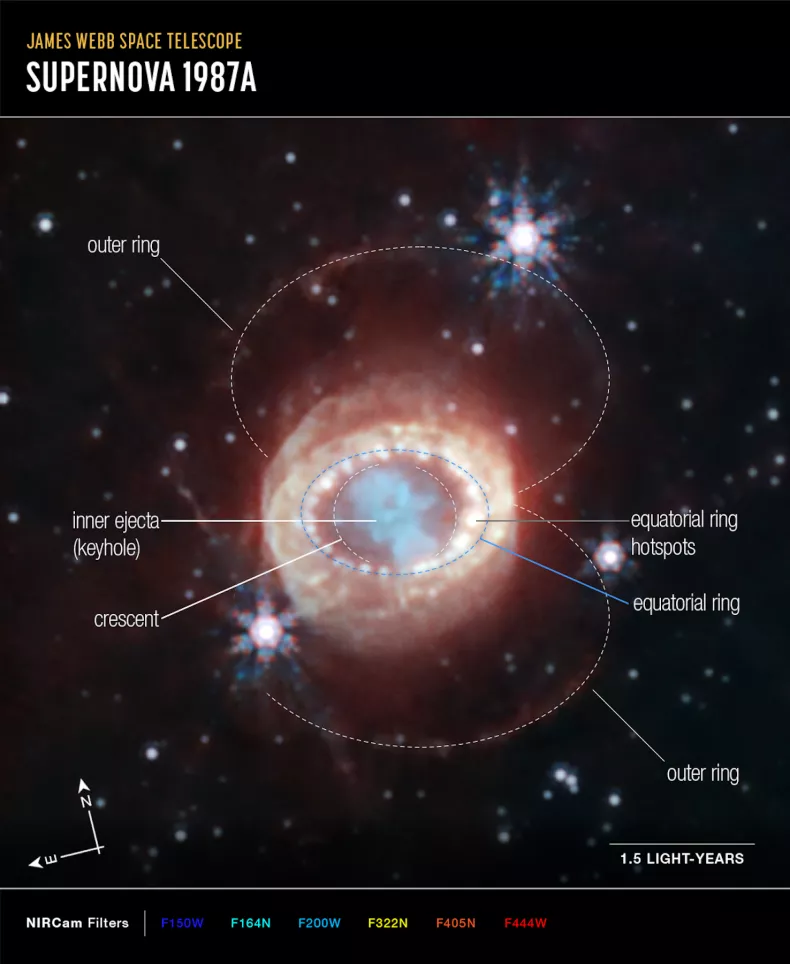The James Webb Space Telescope
Message boards :
Science (non-SETI) :
The James Webb Space Telescope
Message board moderation
Previous · 1 . . . 10 · 11 · 12 · 13
| Author | Message |
|---|---|
 Wiggo Wiggo Send message Joined: 24 Jan 00 Posts: 34859 Credit: 261,360,520 RAC: 489 
|
|
 Wiggo Wiggo Send message Joined: 24 Jan 00 Posts: 34859 Credit: 261,360,520 RAC: 489 
|
More questions than answers. James Webb Space Telescope may have captured massive galaxies that formed 600 million years after the Big Bang. Cheers. |
|
Dr Who Fan Send message Joined: 8 Jan 01 Posts: 3225 Credit: 715,342 RAC: 4 
|
Star Duo Forms ‘Fingerprint’ in Space, NASA’s Webb Finds A new image from NASA’s James Webb Space Telescope reveals a remarkable cosmic sight: at least 17 concentric dust rings emanating from a pair of stars. Located just over 5,000 light-years from Earth, the duo is collectively known as Wolf-Rayet 140. |
 Julie Julie Send message Joined: 28 Oct 09 Posts: 34053 Credit: 18,883,157 RAC: 18 
|
|
 Wiggo Wiggo Send message Joined: 24 Jan 00 Posts: 34859 Credit: 261,360,520 RAC: 489 
|
|
 Wiggo Wiggo Send message Joined: 24 Jan 00 Posts: 34859 Credit: 261,360,520 RAC: 489 
|
The James Webb Space Telescope spots the most-distant active supermassive black hole ever found, so far. NASA's James Webb Space Telescope has detected the most distant active supermassive black hole in the universe to date.Cheers. |
 Wiggo Wiggo Send message Joined: 24 Jan 00 Posts: 34859 Credit: 261,360,520 RAC: 489 
|
NASA's new James Webb Space Telescope image shows 'chaotic' scene of newborn stars. It's been a year since the first full-colour image from James Webb Space Telescope (JWST) was released, and to celebrate the milestone NASA has unveiled another stunning image. Cheers. |
 Julie Julie Send message Joined: 28 Oct 09 Posts: 34053 Credit: 18,883,157 RAC: 18 
|
NASA's new James Webb Space Telescope image shows 'chaotic' scene of newborn stars. Nice! rOZZ Music Pictures |
 Wiggo Wiggo Send message Joined: 24 Jan 00 Posts: 34859 Credit: 261,360,520 RAC: 489 
|
|
 Wiggo Wiggo Send message Joined: 24 Jan 00 Posts: 34859 Credit: 261,360,520 RAC: 489 
|
|

©2024 University of California
SETI@home and Astropulse are funded by grants from the National Science Foundation, NASA, and donations from SETI@home volunteers. AstroPulse is funded in part by the NSF through grant AST-0307956.

